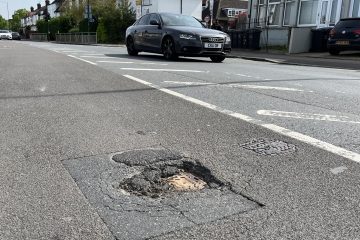The number of MOT stations in the UK is declining, a trend that has continued over recent years, leading to a number of ‘MOT deserts’ where the ratio of vehicles to vehicle testing stations is above average.
MOT station access is essential for drivers, as having one close to them reduces the potential for unsafe driving and makes the annual test more convenient. Over the past 25 years, the amount of cars in Great Britain has risen 39.6% and If growth continues at the same pace, there could be 45 million cars on roads by 2045.
Logistics company Gophr has conducted research to uncover where in the UK has a shortage of MOT station locations, meaning that not only will Nominated Testers (NTs) be overstretched and struggling to meet demand in these areas, but drivers will be be forced to travel far out of their local area just to get an MOT test.
To find this information, they looked at data shared by the DVSA and calculated the number of cars per MOT testing stations and testers throughout the UK.
MOT station pressure
The analysis revealed that Bromley was the area with the highest concentration of cars for every test centre. In the South London town, there are 2,436 cars for every MOT station, which puts immense pressure on all 59 centres to service and get cars back on the road. Sutton, also a town located in South London, had a similarly high concentration, with 2,073 cars for every MOT test centre.
The 10 most concentrated towns and cities, based on the number of vehicles to MOT test stations and testers, according to Gophr were:
| Town/city | No. of vehicles to MOT test stations and testers | |
| 1 | Bromley | 2,436 |
| 2 | Sutton | 2,073 |
| 3 | Leeds | 1,722 |
| 4 | Lerwick | 1,670 |
| 5 | Slough | 1,624 |
| 6 | Wigan | 1,580 |
| 7 | Sunderland | 1,433 |
| 8 | Milton Keynes | 1,425 |
| 9 | Stockport | 1,392 |
| 10 | North Lanarkshire and Motherwell | 1,284 |
Of all the areas analysed in the study, the easiest place for drivers to book in an MOT at late notice was Norwich. Here there are only 158 cars per MOT station, 94% less than in Bromley which had the highest accumulation.
With the introduction of an expanded Ultra Low Emissions Zone (ULEZ) in London, drivers may be forced to either sell their vehicles or get their cars serviced outside of the capital to avoid the £12.50 daily charge. This will negatively affect the MOT centres in London, who will find that they receive less business due to lower demand whilst also increasing stress on centres outside of the ULEZ zone.
In the northwest of London, which includes the boroughs Barnet, Harrow, Hillingdon, Brent, and Ealing, had almost 5,000 cars to one MOT station and was the most concentrated overall. East London (Tower Hamlets, Newham, Greenwich, Bexley, and Lewisham) had the lowest concentration overall with 2,627 cars per MOT station.



